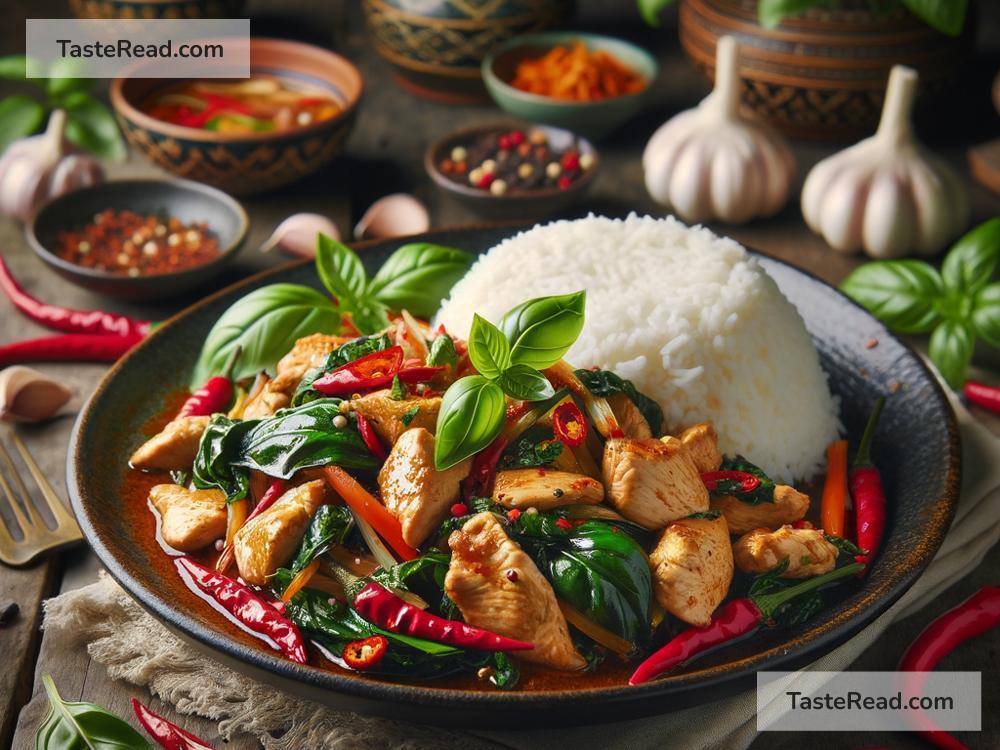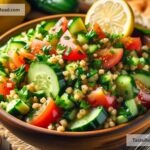Exploring the Complexity of Spicy Thai Basil Chicken Creations
Thai cuisine is famous all around the world for its explosion of flavors. From the tanginess of lime to the heat of chili peppers and the sweetness of palm sugar, every bite delivers a vibrant taste experience. One of the most beloved dishes in Thai cooking is Spicy Thai Basil Chicken, known locally as “Pad Kra Pao Gai.” It’s a dish that looks simple at first glance but carries layers of complexity that make it truly special. In this blog, we’ll explore what makes Spicy Thai Basil Chicken such a delightful creation and how its ingredients and cooking process bring the dish to life.
The Foundation: Simple Ingredients with Flavorful Impact
Spicy Thai Basil Chicken starts with humble ingredients. The main stars include chicken (usually chopped or minced), garlic, chili peppers, Thai basil, soy sauce, oyster sauce, fish sauce, and sometimes sugar. Rice is often served as the bed for the dish, making it a hearty and satisfying meal.
What’s amazing about Thai cooking is how even simple ingredients can pack so much flavor when combined. For example:
– Garlic and Chili Peppers: These create the fiery heat and bold aroma that sets the tone for the dish. Thai cuisine is fearless with spice, and fresh chili peppers bring robustness that wakes up your taste buds.
– Thai Basil: This herb is the soul of the dish. Unlike sweet basil used in Italian cooking, Thai basil has a slightly spicy, peppery flavor with hints of licorice. When combined with heat during cooking, it releases a unique fragrance that transforms the dish.
– Fish Sauce and Oyster Sauce: These sauces add saltiness and umami, making each bite rich and savory. Fish sauce has a distinct, slightly funky flavor that may seem strong alone but blends perfectly in the dish.
While these ingredients might feel simple, their harmony is what creates complexity. Balancing saltiness, sweetness, heat, and freshness is key to authentic Spicy Thai Basil Chicken.
Cooking Method: Where the Magic Happens
Cooking Spicy Thai Basil Chicken is fairly straightforward, but timing and technique are crucial to locking in flavors. The dish is typically made in a wok or frying pan over high heat, which helps everything cook quickly while preserving the vibrant flavors. Here’s a glimpse into how it’s made:
-
Sautéing Garlic and Chili: The first step is usually to sauté chopped garlic and chili peppers in hot oil. As they cook, they release their essence into the oil, which becomes the base flavor of your dish. This step fills your kitchen with an unmistakable aroma that invites you in.
-
Cooking the Chicken: Next comes the chicken, which absorbs the flavors from the garlic and chili. Minced chicken works especially well because it cooks fast and evenly. The high heat ensures the meat stays tender, moist, and flavorful.
-
Adding Sauces: The fish sauce, soy sauce, and oyster sauce are poured in, along with a little sugar to balance the salty and spicy elements. This combination creates a glossy, sticky coating that clings to the chicken, enriching its taste.
-
Incorporating Thai Basil: The final step is adding the Thai basil leaves. These are tossed in right at the end so they remain fresh and fragrant. The heat of the wok wilts the leaves slightly while releasing their herbal, peppery aroma.
Every step of the cooking process is meant to enhance the flavor. Proper timing—like adding the basil at the end—can make a world of difference in delivering bold, layered tastes.
Cultural Roots of Thai Basil Chicken
Pad Kra Pao Gai isn’t just a tasty dish; it’s also deeply rooted in Thai culture. It’s often considered a comfort food and a go-to option for locals when they need a quick, satisfying meal. In Thailand, it’s common to find this dish at street food stalls, where vendors cook it hot and fresh to order. Many people enjoy it with a fried egg on top, which adds creaminess and richness.
Though the recipe is simple, the dish reflects Thai cooking’s emphasis on balance and freshness. Just like Thailand itself, where bustling cities contrast with serene countryside landscapes, Spicy Thai Basil Chicken strikes a balance between bold, fiery flavors and refreshing aromas.
Making It Your Own
While the traditional recipe for Spicy Thai Basil Chicken is already amazing, it’s a dish that offers room for creativity. People often customize it to suit their preferences. For example, if you’re not a fan of spice, you can reduce the chili peppers or use a milder variety. Vegetarians can replace chicken with tofu or mushrooms, and some cooks even add vegetables like green beans or bell peppers to make it heartier.
For those who love experimenting, this dish is a great way to explore the interplay of spices, herbs, and sauces. Just remember—the key is always balance.
Conclusion: A Celebration of Complexity
Spicy Thai Basil Chicken may seem simple when you glance at the ingredients list or when it’s served on a plain plate of rice. However, each component and cooking step contributes to a rich and complex flavor profile. It’s a dish that marries heat, freshness, and savoriness in every bite. Whether you’re enjoying it at a street market in Bangkok, learning to cook it in your kitchen, or customizing it to make it your own, Pad Kra Pao Gai is a true celebration of Thai flavor.
So, take time to explore this dish. Taste the layers of spice, savor the fragrance of Thai basil, and appreciate the balance of sauces. When you cook and eat Spicy Thai Basil Chicken, you’re not just enjoying food—you’re experiencing a part of Thai culture and culinary artistry.


